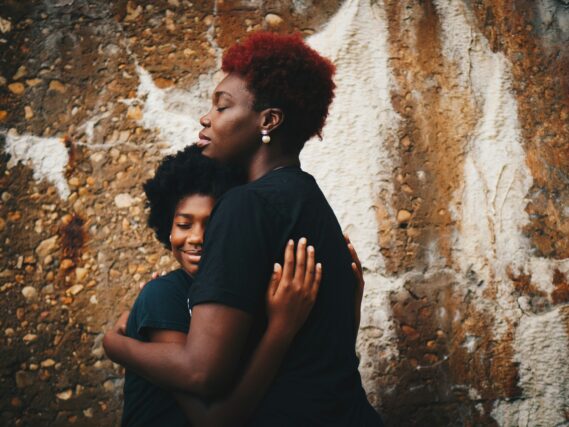How Your Childhood Attachment Style Affects Your Adult Relationships
 Unsplash
Unsplash The bonds formed with our earliest caregivers lay the foundation for how we relate to other people for the rest of our lives. Our childhood attachment style shapes how we handle intimacy, conflict, express emotions, and whether we feel secure or anxious within relationships. Understanding your attachment style offers powerful insights into romantic challenges, communication patterns, and why you may be drawn to certain types of partners.
1. What is an attachment style?
Attachment theory, pioneered by psychologist John Bowlby, posits that the way infants interact with their primary caregivers determines their internal working model of relationships. This subconscious blueprint influences how we perceive love, trust, and worthiness within adult relationships.
2. Secure attachment: The foundation for healthy relationships
Children with secure attachment had caregivers who were consistently responsive, attuned to their needs, and a source of comfort. As adults, they tend to feel secure in relationships, trust easily, are comfortable with both intimacy and independence, and handle conflict constructively.
3. Anxious attachment: Craving closeness but fearing abandonment
Anxious attachment often stems from inconsistent parenting – sometimes caregivers were available, other times emotionally distant. As adults, this leads to an intense desire for closeness, a fear of abandonment, and a tendency to overanalyze their partner’s actions for signs of rejection.
4. Avoidant attachment: Shunning intimacy and vulnerability
Children with avoidant attachment learn their caregivers are unavailable or disapproving when they express emotional needs. As adults, they fiercely guard their independence, have difficulty with intimacy, emotionally shut down, and may minimize the importance of relationships altogether.
5. Disorganized attachment: A confusing mix of longing and fear
Disorganized attachment often results from neglect, abuse, or caregivers who were the source of both comfort and fear. Adults with this style experience internal conflict, longing for intimacy yet feeling deeply unsafe in relationships, leading to erratic behavior and difficulty trusting others.
6. How your attachment style affects your choice of partners
Without conscious awareness, we gravitate towards partners who feel familiar, often recreating our early relationship dynamics. Someone with anxious attachment might seek a more avoidant partner, reinforcing their fear of abandonment, while avoidants may be drawn to anxious partners, confirming their belief that intimacy is suffocating.
7. Your attachment style impacts your communication.
Anxious types may overshare, seek constant reassurance, or interpret their partner’s actions negatively. Avoidant types tend to shut down during conflict, emotionally withdraw, and have difficulty expressing vulnerable feelings. Those with secure attachment generally communicate directly, express needs authentically, and handle conflict with maturity.
8. How attachment insecurity affects conflict in relationships
Couples with mismatched attachment styles often fall into destructive patterns. Anxious types may escalate conflict by clinging or becoming critical, pushing avoidant partners further away. Avoidants may use stonewalling or dismissing their partner’s feelings, leaving anxious partners feeling unloved and unheard.
9. Your attachment style shapes how you perceive yourself and your partner.
Anxious attachment can lead to negative self-esteem, feeling unworthy of love, and constantly scrutinizing your partner for signs of potential rejection. Avoidant attachment fosters a deep belief in self-reliance and can result in seeing your partner as needy or overly dependent. Secure attachment allows for greater self-awareness and a more balanced and compassionate view of your partner.
10. Jealousy and your attachment style
Those with anxious attachment are more prone to jealousy, fearing their partner will find someone better. Avoidants, though appearing less emotionally affected, may experience jealousy disguised as dismissiveness or a sudden withdrawal of affection.
11. How attachment styles can create self-fulfilling prophecies
If you have anxious attachment and fear abandonment, you might unconsciously act in ways that push your partner away (clinginess, need for constant reassurance, jealousy) – thus validating your fear. Likewise, avoidant tendencies to shut down emotionally can create distance within a relationship, confirming your belief that true intimacy isn’t possible.
12. Your attachment style impacts your ability to trust.
Early trust wounds make it difficult for those with anxious or avoidant styles to truly trust their partners. Anxious individuals may constantly seek reassurance or doubt their partner’s sincerity. Avoidants may struggle to believe anyone has genuine love and support to offer.
13. Breaking out of unhealthy patterns requires awareness and effort.
While our attachment styles are deeply ingrained, change is possible! The first step is understanding your own style and the impact it has on your relationships. Communicating your attachment needs to partners, practicing self-compassion, and potentially seeking therapy can support healing and creating new, healthier dynamics.
14. Can you change your attachment style?
Yes, but it takes commitment and often professional guidance. Therapy can help you understand your early attachment experiences and develop healthier coping mechanisms. Building secure attachment with a therapist can also create a corrective experience, fostering a greater sense of security as you navigate other relationships.
15. Having a partner with a secure attachment can be healing.
Partnering with someone securely attached can offer a safe space to explore your attachment wounds and challenge old patterns. Securely attached individuals provide consistency, healthy emotional expressiveness, and non-judgmental support, modeling a different way of relating.
16. You can have healthy relationships even with an insecure attachment style.
Attachment style is just one factor in relationship success. Open communication, willingness to learn and grow, and choosing a partner who is also committed to personal development can create fulfilling relationships regardless of your starting point.
17. Learning about attachment theory fosters compassion for yourself and your partner.
Understanding your own and your partner’s attachment styles reduces blame and fosters greater understanding. Instead of seeing behaviors as intentional attempts to hurt you, you can start recognizing these patterns as rooted in early experiences, opening the door for greater empathy and a willingness to work together.





